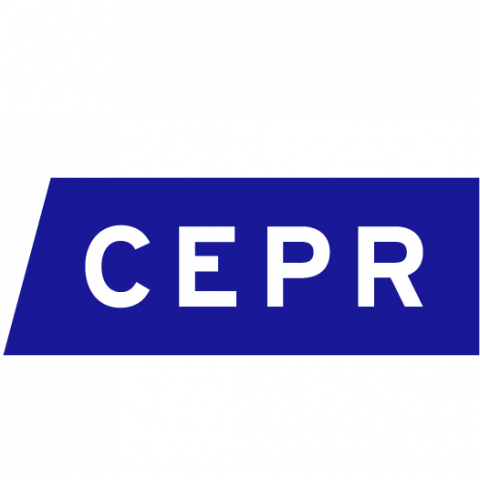
Manager characteristics matter for productivity, but Indian garment manufacturers may not know what constitutes good management or how valuable it is
Recent studies leave little doubt about the importance of management for firm productivity. A survey of 12,000 firms from 34 countries over 15 years tells us that the two are positively correlated (van Reenen 2018). Likewise, a randomised experiment in Indian textile factories has shown management consulting to improve productivity by 17 % after a year (Bloom et al. 2013). Why, then, do firms in developing countries seemingly invest so little in improving management, despite such gains? Our recent study suggests that they might not know what constitutes good management or how valuable it is (Adhvaryu et al. 2019). Garment factories in India, it appears, undervalue many productive managerial qualities that are difficult to observe.
Learning and retention
To set the stage, we offer an intimate look at how production teams in Indian garment factories improve with experience. Consider a team’s efficiency, defined as the proportion of targeted production achieved per unit of time. Figure 1A shows that efficiency increases as a team spends more time producing the same style of garment, and this learning occurs fastest when a team begins work on a new order. Efficiency rises from 40% to almost 60% throughout a production run, and roughly half of that increase is achieved in the first two weeks.
Figure 1 Efficiency by days running
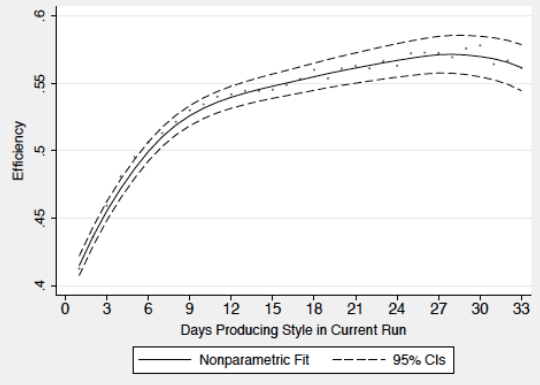
Figure 1 shows how efficiency (vertical axis) changes with experience (horizontal axis). Experience is defined as the consecutive number of days a team has been producing the same style of garment. The dots represent mean of efficiency by each bin of experience (day). The solid line shows a smooth fitted curve, and the dotted lines show 95% confidence intervals.
Teams also seem to retain what they previously learned. Figure 2 shows that teams who have worked on a style previously start off with higher efficiency at the beginning of a new production run of the same garment. However, we also find evidence that teams forget what was previously learned. As more time passes since a team last produced a style, the team’s starting efficiency for that same style decreases (Figure 3A in our paper, not shown here).
Figure 2 Retention (prior days)
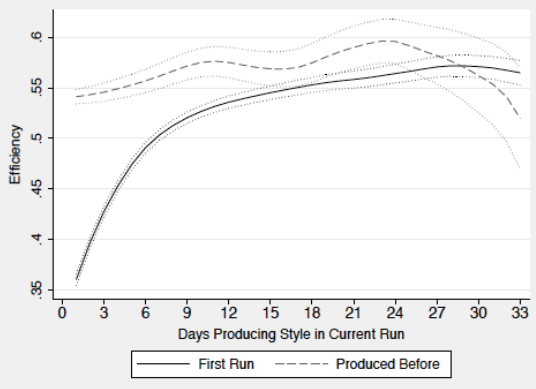
Figure 2 shows curves similar to Figure 1, but estimated separately for teams who have produced garments of the same style before (dashed line) and those who have not (solid line). Dotted lines show 83% confidence intervals to detect significant differences between the curves.
Quality of management
Leveraging a rich survey of managers across more than 120 comparable production lines and granular data on their realised productivity over nearly two years, we provide novel insights into how a myriad of management characteristics relate to productivity dynamics. Perhaps unsurprisingly, tenure — an easily observed characteristic — is positively related to productivity. As Figure 3 shows, teams managed by managers with above-median experience produce at higher productivities throughout a production run. Cognitive skills, as measured by digit span recall, are also relevant to efficiency. Figure 4 shows that teams whose manager had above-median cognitive skills start production runs at higher efficiency, though the difference subsides later in the production run.
Figure 3 Tenure supervising current line
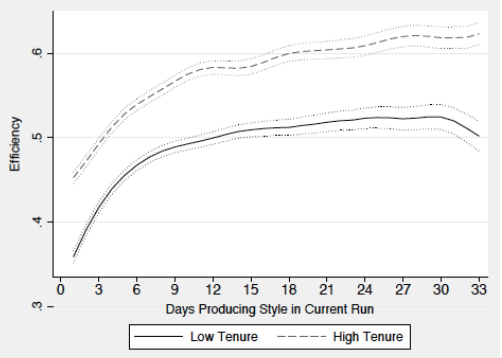
Figure 4 Digit span recall

Figures 3 and 4 show curves similar to earlier figures. In Figure 3, the sample is divided into teams whose managers have above-median and below-median tenure, where tenure is the number of years spent supervising the current team. In Figure 3, the sample is split into teams whose managers have above-median and below-median cognitive skills. Dotted lines show 83% confidence intervals to detect significant differences between the curves.
Importantly, other psychological characteristics and personality traits, which are less commonly and easily observed, also predict productivity dynamics. Figure 5 shows that managers with an internal locus of control enable their teams to produce at higher efficiency levels throughout the production run. Similarly, Figure 6 shows that teams supervised by managers who are more psychologically distressed start producing orders at a lower efficiency level, though the difference disappears quickly.
Figure 5 Internal locus of control
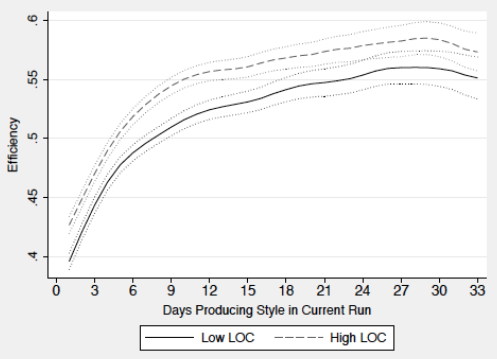
Figure 6 Psychological distress

Figures 5 and 6 show curves similar to earlier figures. In Figure 5, the sample is divided into teams whose managers have high or low internal locus of control. In Figure 6, the sample is split into teams whose managers have high and low psychological distress. Dotted lines show 83% confidence intervals to detect significant differences between the curves.
(Missed) opportunity
Finally, we show that market wages reflect easily observed characteristics such as tenure more than hard-to-measure personality and psychological traits, such as locus of control, and productive practices like managerial attention. Accordingly, our study highlights opportunities for productivity gains via personnel improvements. That is, what if the factories could accurately assess these hidden traits, and better understand managers’ influence on their teams’ productivities? Screening on key characteristics would allow them to hire managers who better enable productivity at nearly the same pay. Likewise, they could emphasise essential managerial practices through training. Both avenues, our simulations show, could improve productivity substantially with little impact on payroll.
Conclusions
Managerial quality remains an Achilles’ heel for firms in developing countries. These firms may never achieve higher productivity unless managerial practices change. We shed light on how firms might misunderstand what characteristics make a good manager. We also suggest that firms could benefit from screening for and training managers in the right characteristics. The results beg the question: What if we could leverage technology to help firms screen and train managers at low cost? We hope to pursue this question in the near future.
Editors' note: This column first appeared on VoxEU.org and is based on this PEDL project.
References
Adhvaryu, A, A Nyshadham and J Tamayo (2019), “Managerial Quality and Productivity Dynamics”.
Bloom, N, B Eifert, A Mahajan, D McKenzie and J Roberts (2013), “Does management matter? Evidence from India”, Quarterly Journal of Economics128(1): 1-51.
Van Reenen, R (2018), “Management and the wealth of nations”, VoxDev.org, 18 January.



